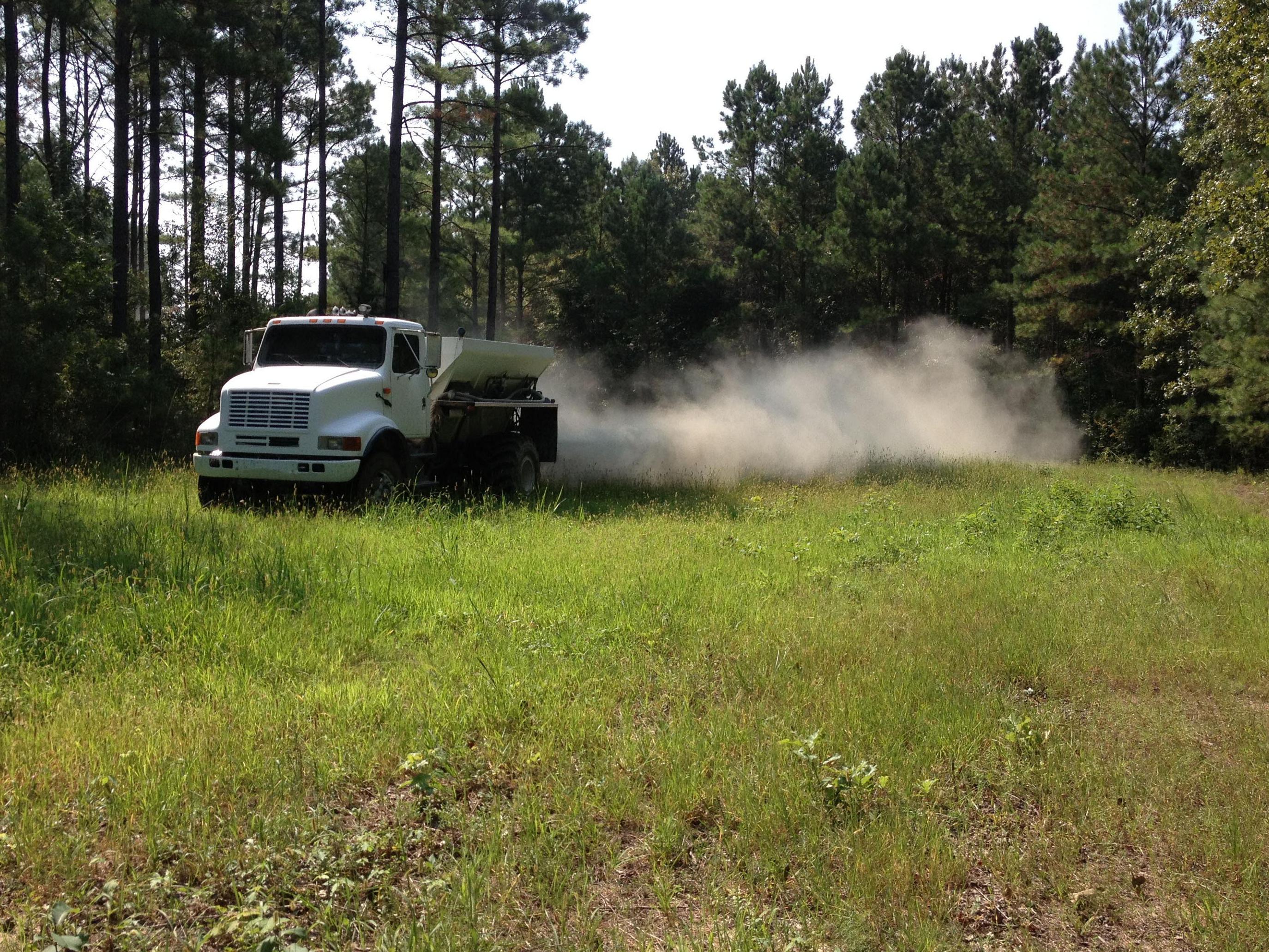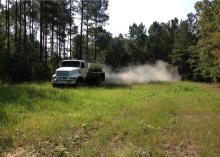Information Possibly Outdated
The information presented on this page was originally released on September 7, 2018. It may not be outdated, but please search our site for more current information. If you plan to quote or reference this information in a publication, please check with the Extension specialist or author before proceeding.
Well-managed food plots nourish and attract deer
STARKVILLE, Miss. -- Planting food plots for deer and other wildlife is common practice in Mississippi, and for good reason: Food plots provide much-needed nutrition for deer and viewing opportunities for hunters.
Commonly, hunters and land managers have the best intentions when planting food plots, but they miss some opportunities to maximize effectiveness for optimal forage production and for hunting options. A review of some the most common lost opportunities will help take your food plots to the next level.
Taking a soil sample for nutrient analysis is extremely important. In Mississippi, a soil test through the Mississippi State University Extension Service costs only $8. A soil analysis report will provide soil pH, as well as the availability of phosphorous, potassium and other micronutrients that are critical for optimal plant growth.
Once you have the results from your soil test, adjust the pH by adding the recommended amount of lime. In some cases, you may have to do this for multiple years to bring the pH up to 6.0 or greater. Next, apply the recommended amounts of nitrogen, phosphorous and potassium fertilizers. Simply applying a few bags of 13-13-13 fertilizer on a plot is not advisable and can actually do more harm than good.
Adjusting the pH and adding right type of fertilizer based on the crop you want to grow is critical for a successful food plot. These steps will produce tastier forage to attract more deer. A recent study conducted by the MSU Deer Lab showed that deer were 11 times more likely to feed in a properly fertilized plot, than in an adjacent, unfertilized plot.
As for planting your food plot, many people think adding double the amount of seed is good. Too few plants will make for a sparse food plot, but too many plants can be problematic as well. Pay attention to the planting depth of seed. Many people plant small-seeded forages, such as clover and chicory, too deeply. Most small-seeded forages should not be planted any deeper than one-fourth of an inch. So, disking in clover seed along with wheat or oats will severely reduce the clover germination rate.
Remember the letters P-L-S when planting food plots. PLS stands for pure live seed, or the amount of viable seed. All seeding rates are given as PLS. Each bag of seed should have a tag listing how much weight of the bag is actually viable seed. It’s almost certain that a bag of clover will have a PLS of around 50 percent. Therefore, a 50-pound bag of clover contains only 25 pounds of actual seed. The additional weight is the seed coating. So, adjust your calculations accordingly. If the recommended rate is 5 pounds of clover per acre, you will have to plant 10 pounds by weight to get 5 pounds per acre of PLS.
Planting and managing food plots provide additional food sources and enhance nutrition for wildlife. It can be a rewarding experience for landowners/managers and hunters, especially when you take the time and care to amend the soil and follow recommended planting protocols. There is just something to be said for seeing one’s own time and hard work pay off in the form of increased hunter harvest, wildlife viewing opportunities, and improved animal health and conditioning.
For more information about wildlife food plots, look for MSU Extension Service Publication 3102, “Getting the Most Bang for Your Buck: A Guide for Liming and Fertilizing Wildlife Food Plots,” or Publication 2111, “Supplemental Wildlife Food Planting Manual for the Southeast.” These publications are located at http://extension.msstate.edu/publications.
For more guidance on wildlife food plots, download the Food Plot app from the MSU Deer Lab (http://msudeerlab.com/apps.asp).

Editor’s Note: Extension Outdoors is a column authored by several different experts in the Mississippi State University Extension Service.







